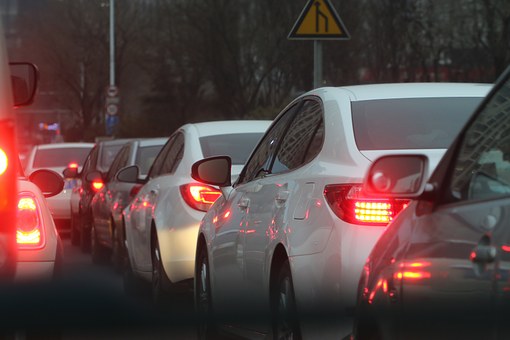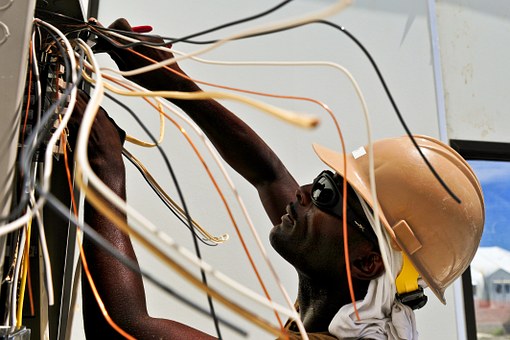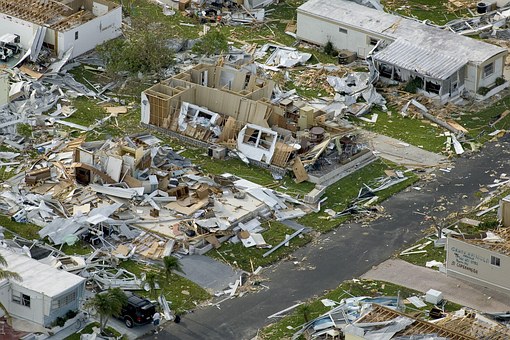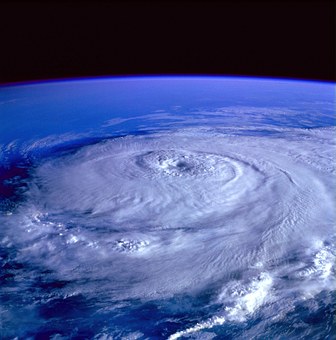Hurricane season officially begins June 1 and continues through November 30. You should start planning early to protect your family and property. If you live in an area threatened by storm surge – an EVACUATION ZONE – discuss evacuation plans with your family so everyone is on the same page and knows what to do. Check with city or county officials to find out if your home is in an evacuation zone.
When making a family plan for any hazard, choose a place to call and a place to meet. Give all family members the name and phone number of someone outside your city or state and not a danger zone. If anyone gets separated from the group, they should call that designated number to let others know where they are. Check out and learn to use the American Red Cross “Safe and Well” website.
Learn evacuation routes BEFORE storm season. If possible, practice driving the route out of town ahead of time. Make sure you have a full tank of gas before you leave. You should expect delays and longer drive-times than normal. Traffic congestion in an evacuation is unavoidable.
It’s important to put an emergency supply kit together now. You should refill and re-check supplies AFTER EVERY STORM. An emergency supply kit includes: NOAA weather radio and batteries, flashlight and batteries, extra eyeglasses, bottled water, non-perishable food, dry clothes, bedding, medications and copies of prescriptions, special products for babies, elderly and medically fragile family members, cash, credit cards, photo IDs, important documents and records, proof of residence and information your agent will require to process insurance claims. After the storm hits, you may be able to return home in a matter of days. But re-entry may take much longer, depending on storm damage. Because hurricanes are extremely dangerous and unpredictable, officials plan for storms one category worse than is predicted. So should you.
- Make a checklist of preparations to be made before evacuation and go over it with your family. Review it again when a storm is in the Gulf of Mexico.
- If you plan to stay in a hotel or motel, make reservations and confirm your reservations before you leave. If you plan to stay in a shelter, bring what you need to be comfortable, including bedding and toys for kids. Shelters will vary in what they offer evacuees.
- Contact your local office of emergency management to get information on making arrangements for anyone in your household who may need special assistance during an evacuation. Texas 2-1-1 has a voluntary registration of any Texan in need of special assistance.
- Prepare an emergency kit for your pets and a plan for how to care for them when you are on the road and in a shelter or motel. Do not leave your pets behind.
Evacuating is the Smartest Move
When a hurricane threatens and you are living in an evacuation zone, the smartest thing to do is leave when local officials tell you to do so. Review this checklist and read it again before you leave. Monitor broadcasts for instructions. Officials always plan for storms that are one category worse than predicted. So should you.
- Check with local officials to find out if you live in an evacuation zone – an area that can be flooded by hurricane storm surge – and if so, make plans to leave when local officials call for a mandatory evacuation.
- Learn your evacuation routes.
- Prepare an evacuation plan.
- Prepare an emergency supply kit.
- Review your insurance policy for protection against wind and flood damage, and prepare an inventory of personal property needed for insurance settlements.
- Obtain waterproof containers for carrying important papers such as proof of insurance and medical prescriptions.
- Obtain items needed to board up windows and protect your home.
- Make plans for family members with special needs and for your pets.
Re-check your plans when a storm is in the Gulf
- Make sure your gas tank is full and your vehicle is ready for the road.
- Review your emergency plan, including the place you and your family can meet if separated, and plans for family members with special health care needs.
- Check your emergency supply kit and map of evacuation routes.
- Notify relatives and friends about evacuation plans and confirm reservations if planning to stay at a motel.
- Double check places you can stay between your home and destination should roads become clogged.
- Double check your emergency supplies for family and pets.
- Monitor TV and radio broadcasts.
Prepare your home
- To protect your home, put up shutters or plywood on all windows and openings.
- Move patio furniture, hanging plants and gas grills inside.
- If your home is vulnerable to rising water, move valuables and furniture to a higher level.
- Turn off lights, household appliances, heating systems, or cooling and ventilation systems.
- Turn off electricity at the main circuit breaker or fuse box to protect appliances from power surges and reduce the risk of live dangling wires after the storm.
- If the house is supplied with natural or propane gas, check well in advance with your gas company on what to do.
- Fill boats with water to weigh them down and check mooring lines.
- Leave BEFORE a mandatory evacuation if you are towing a trailer or boat.
- Make a final walk-through inspection of the home before closing the door.
On the road

- Leave with a full tank of gas.
- Leave early, remain calm and travel only as far as necessary to reach a safe area.
- Watch for instructions on Texas Department of Transportation road signs.
- Continue monitoring radio broadcasts in your vehicle.
- Be patient with road congestion because heavy traffic in an evacuation is unavoidable.
- Do not drive into water across a roadway: Turn Around, Don’t Drown.
- Do not try to ride out a hurricane in your vehicle.
Evacuating with Your Pets

Family pets should never be left behind in an evacuation. As families in evacuation areas prepare for hurricane season, they also need to plan for the family pet.
Decide now where you and your family will stay if local officials call for an evacuation. Many hotels or shelters may not allow pets. Prepare an emergency kit for each pet in a waterproof, easyto-carry container. Families evacuating in their own vehicles can use this check list:
- A secure pet carrier, cage or crate, plus leash and collar or harness for each pet
- Muzzle (Anxiety and stress can cause any pet to bite. A muzzle serves to protect both the pet and other people.)
- An up-to-date identification tag on your pet’s collar and proof of ownership, such as a picture of you with your pet
- Veterinary records and medications, such as flea or heartworm treatment, along with emergency contact information
- One week’s worth of food and water for each pet, including dishes, spoon and a can opener
- Written feeding and medication instructions, including what NOT to feed your pet
- Clean-up supplies: paper towels, newspaper, kitty litter with pan and scoop for cats, sealable bags for disposing of waste, wet and dry wipes and hand sanitizers
- Pet toys, bedding and treats
If you will need transportation assistance during an evacuation, dial 2-1-1 in advance to add your name to the Transportation Assistance Registry. No one will be denied transportation assistance because he or she is traveling with a pet.
During the hurricane

The greatest threat to personal safety exists during a storm and in the immediate aftermath when high winds can topple trees and produce deadly flying debris. Heavy rain can produce flash floods and storm surge can present another deadly threat. To stay safe in a home during a hurricane, it is suggested that individuals follow these steps:
- Stay inside and away from windows, skylights and glass doors. Find a safe area in the home (an interior room, a closet or bathroom on the lower level).
- If flooding threatens a home, turn off electricity at the main breaker.
- If a home loses power, turn off major appliances such as the air conditioner and water heater to reduce damage.
- Do not use electrical appliances, including your computer.
- Do not go outside. If the eye of the storm passes over your area, there will be a short period of calm, but at the other side of the eye, the wind speed rapidly increases to hurricane force and will come from the opposite direction. Also, do not go outside to see “what the wind feels like.” It is too easy to be hit by flying debris.
- Beware of lightning. Stay away from electrical equipment. Don’t use the phone or take a bath/shower during the storm.
Post-Storm Preparedness: Plan For Lengthy Power Outages

If you live in a coastal area that is NOT in a hurricane evacuation zone, it is important to make plans for surviving without electricity for three to seven full days. Most serious storms will knock out electricity and scatter debris across widespread areas. Trees and power lines will be down.
Once the storm has passed, it may take 72 hours – three full days – before supplies of food, water and ice can be moved to distribution areas. Depending on storm damage, it may take much longer to restore electric power. Retail stores cannot re-open until roads are cleared and electric power restored.
Make sure you have AT LEAST a three-day supply of non-perishable food, water, medications and other necessities. These supplies should be in containers that are water proof and easy to carry. This preparation will serve you well in any disaster or emergency.
Restoring electricity neighborhood by neighborhood may take days or even weeks. It is crucial for coastal residents to learn about preparedness for hurricanes and tropical storms and to make emergency plans now. Any time there is a storm in the Gulf of Mexico, residents of coastal and inland counties should monitor radio and TV broadcasts and listen for instructions from local officials.
Texans everywhere would do well to monitor weather reports when a storm is in the Gulf. A hurricane evacuation will result in heavy traffic on Texas highways and increased demand for hotel and motel rooms in cities throughout the state. Hurricanes can cause severe flooding and tornadoes miles away from the coast.
Carbon Monoxide Safety And Generators
Many people die immediately after a hurricane, severe storm or other disaster when generators or gasolinepowered tools expose them to deadly carbon monoxide (CO). Carbon monoxide is an invisible, odorless, tasteless and poisonous gas.
To avoid carbon monoxide exposure, be extremely careful using generators, lanterns, gas powered appliances or when cooking on charcoal grills or gas grills. Equipment or appliances that produce carbon monoxide should never be used indoors. Take the following precautions:
- NEVER use a generator or grill indoors, including inside homes, garages, basements, crawl spaces, tents or other enclosed or partially enclosed areas.
- Opening doors and windows or using fans will NOT prevent CO build-up. The gas cannot be seen or smelled and poisoning can occur in a matter of minutes.
- Follow the instructions that come with the generator. ALWAYS locate the unit outdoors on a dry surface, away from doors, windows, vents and air conditioning equipment that could allow CO to seep into the house.
- Gas-powered generators can be used safely if they are placed in a well-ventilated outdoor area at least 10 feet away from a home or structure.
- If electric power is out, do not use gas ranges or ovens to heat your home
- Remember that you cannot see or smell CO and portable generators can produce high levels of CO very quickly. If you start to feel sick, dizzy, or weak while using a generator, get to fresh air immediately. DO NOT DELAY.
- If someone else collapses or is not breathing, dial 9-1-1.
- When you are making your hurricane or severe weather preparedness plans, remember to install battery-operated CO alarms or plug-in CO alarms with battery back-up in your home, always following the manufacturer’s installation instructions. Test your CO alarms frequently and replace dead batteries.
Safe Repairs And Safe Clean Up

When you are ready to return after a hurricane evacuation, plan for safe clean-up before you travel home. Organize a cleanup kit in advance. The kit should include: rubber gloves, cleaning products, bleach, sponges, goggles, spatula, cleanup suits, rubber boots, odor-control products, trash bags, hydrogen peroxide, adhesive bandages, antibiotic ointments, work towels. You will also need contact information for your utility providers.
Read the following tips for staying safe BEFORE you begin the clean-up process.
Safety Tips: Before Entering a Building
Utility checks: Check for downed or loose power lines and gas leaks. Gas leaks will smell like rotten eggs. Call the utility company immediately if you suspect you have a gas leak. If you see a downed power line, move away from the line and from anything touching it and contact your utility company. Do not try to move the downed power line or anything in contact with it. Do not try to move it using another object such as a branch, stick or broom. Do not drive over a downed line.
Look for external damage: Examine the foundation, roof and chimney for cracks or other damage. Inspect porch roofs and overhangs. If you find obvious damage or have serious doubts about safety, contact a building inspector before you go inside.
Enter the building slowly and carefully: If the door sticks at the top as it opens, it could mean the ceiling is ready to cave in. If you force the door open, stand outside to avoid being hit by falling debris. If in doubt about the safety of a building, do not enter. If the ceiling is sagging, or there are other signs the building is in a weakened condition or about to collapse, leave the building immediately.
Safety Tips: After Entering a Building
Double check and re-check for gas leaks: To be safe, assume there COULD be a gas leak in the house. Return to your home during daylight to avoid turning on lights. Do not light candles, cigarettes or operate electrical switches in the house until it has been inspected and is safe. If you smell gas or hear a hissing or blowing sound, open a window and leave immediately. Turn off the main gas valve from the outside, if you can. Call the gas company from a neighbor’s residence or from a cell phone away from the building.
Be careful around electricity: If possible, turn off the electricity at the main fuse box or circuit breaker. If the situation is unsafe, leave the building and call for help. If you are wet, standing in water, or are unsure of your safety, do not check the electrical system. You may want to have an electrician inspect your wiring. Do not turn on the lights until you are sure they’re safe to use.
Once the electrical power is turned off, unplug all appliances: Clean them out and let them dry. Then have them checked by a professional before using them again.
Check water and sewage systems: If pipes are damaged, turn off the main water valve. Check with local authorities to make sure the water is not contaminated.
Safety Tips for Cleaning Up
Protective clothing: Wear protective clothing and make sure your hands, arms, feet and legs are covered. If you have cuts on your hands or other body parts, protect them from contact with water or debris. You will want to protect yourself from inhaling harmful odors or fumes while cleaning up. Even people with no known risk factors for mold should wear filtering face masks and gloves if they plan to do anything more than look around.
Use extreme caution as you begin cleaning up: Floors and stairs may be covered with debris and may be very slippery. Watch out for broken bottles, exposed nails, soft spots in the floor and other hazards. When you open cabinets, be on watch for objects that may fall because they are not in their usual place. Standing water should be removed. Fans at open doors and windows can be used to help with the drying out process. They should blow outward, not inward.
When in doubt, throw it out: Get rid of all food and other supplies that may have been contaminated or that you suspect may have come in contact with floodwater. Porous materials such as carpets, mattresses, furniture with upholstery should be thrown out. You should also discard insulation, ceiling tiles, wallboard, drywall and particle board because they are porous.
Be careful when dealing with mold: Mold is a fungus with a musty, earthy smell that can grow on items that have been wet for several days, especially after flooding. It also can be hidden behind furniture, under carpets, floors, and cabinets, in closets or attics and inside walls. Use protective gear – goggles, a filtering face mask, rubber gloves, and clothing that fully covers arms, legs, and feet – when handling mold. Remove mold from hard surfaces by scrubbing with a stiff brush and a mixture of one cup of bleach to one gallon of water. NEVER MIX BLEACH WITH AMMONIA or products containing ammonia! If mold covers an area is larger than 10 square feet, use a professional mold clean-up contractor.
Beware Of Fraud

After the storm, many newcomers, from volunteers to state and federal employees, will show up in your area. Fraud artists show up as well. Here are some things to consider during the clean-up period.
- Use licensed local contractors, ask for references and check them before entering into a contract.
- Ask for a written estimate from at least three contractors, including cost of labor and materials.
- Read contracts carefully and read the fine print.
- Make sure the contractor carries general liability insurance and workers’ compensation. If he or she is not insured, you may be liable for accidents that occur on your property.
Clipboards with official looking forms are NOT proof that an individual represents a state, federal or voluntary agency serving disaster survivors.
- Do not give out personal information, such as a social security number, when you are not sure of the identity of the person requesting information.
- Request identification, including a phone number for the agency to confirm the representative’s ID. Legitimate representatives of government or voluntary agencies will have proper identification.
- Never pay a fee for help. Government officials or volunteers do not charge for disaster assistance.
In the wake of a disaster, bogus solicitations may arrive by email, by telephone or when someone knocks at the door. The best advice is to provide cash donations to known organizations.
To report suspicious activity, call the Texas Attorney General’s Consumer Complaint Hotline at (800) 252-8011. More information on fraud in disastersfrom the Attorney General’s Consumer Protection Division

